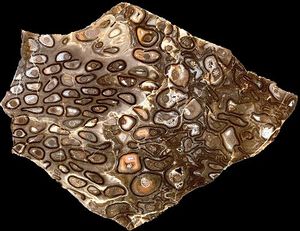- Main article: Fossils
Organisms in the kingdom Plantae are said to be plants. Plants make a majority of their energy through photosynthesis, and many of them reproduce through seeds (though there are some such as mosses and ferns that reproduce via spores). Many plant fossils will be in the form of leaves, though some fossils may feature the bark or a branch of a tree. Lepidodendron is one such fossil that is frequently identified by its bark as opposed to its leaves.
Flowering Plants (Phylum Anthophyta)
| Picture(s)
|
No pictures have been added as of yet.
|
| Physical Description
|
Also known as Magnoliophyta, Anthophyta are vascular plants which produce seeds with a fruit. Another characteristic is the production of flowers. Their seeds contain an endosperm which provides nutrients to the embryo. Because of these distinguishing characteristics, they are the most diverse and numerous land plants.
|
| Fossil Range
|
Creataceous to recent
|
| Etymology
|
"fruiting plant"
|
Genus Acer (Maple)
| Picture(s)
|
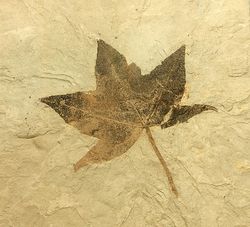
|
| Common Names
|
Maple trees
|
| Physical Description
|
Maple leaves are palmate, with each of the five lobes spreading from the base of the leaf. Compared to a sycamore (Platanus) leaf, the lobes tend to be more rounded and less spread out. The way the leaf attaches to the stem is also different - in the sycamore, the leaf simply fans out from the stem but in the maple the lobes tend to have more of a curve instead of extending straight from a point. Another difference between the two genera is the edges of the leaves - many sycamore leaves will have serrated or otherwise spiked edges, and this is less common (though not impossible) in maples. Despite many common differences, some specimen are very difficult to differentiate on leaves alone. One of the most reliable ways to differentiate the two is that sycamore leaves have three main veins that branch into the two side veins, while the main veins in maple leaves are separate.
|
| Fossil Range
|
Paleocene to Recent
|
| Taxonomy
|
Family: Sapindaceae
Subfamily: Hippocastanoideae
|
| Mode of Life or Habitat
|
Modern maple trees are very hardy, and can grow in a wide variety of conditions. However, they thrive in cool and wet conditions (which is why they are so prevalent in the north and northeast parts of the globe). Maple trees can also survive in a variety of light conditions, with maples in cool climates preferring full sun. However, in warm climates they prefer partial shade as too much sun exposure can result in wilting.
|
| Adaptations Over Time
|
As maple trees are typically deciduous, they drop their leaves in the wintertime which allows them to remain dormant and conserve energy. Maple tree seeds also have wing-like structures, allowing the seeds to travel far from predators or other harm. Many of the root systems are typically dense and fibrous, inhibiting the growth of other vegetation underneath them. This also allows the roots to spread out, gathering water more efficiently.
|
| Distribution
|
Many extant species are found in Asia, though some are also found in Europe, North America, and northern Africa. Typically, these species are only found in the northern hemisphere (though there are some exceptions). Fossils of this genus seem to follow the same distribution, being found primarily in the northern hemisphere.
|
| Additional Information
|
Acer is an extant genus of angiosperms, also known as flowering plants. Most maples are trees growing to a height of 10–45 m (33–148 ft). Others are shrubs less than 10 meters tall with a number of small trunks originating at ground level. Most species are deciduous, and many are renowned for their autumn leaf color, but a few in southern Asia and the Mediterranean region are evergreen. Most are shade-tolerant when young and are often riparian, understory, or pioneer species rather than climax overstory trees. However, there are a few exceptions (such as the sugar maple).
|
Genus Populus (Aspen & Poplar)
| Picture(s)
|
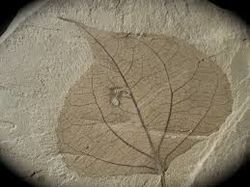
|
| Physical Description
|
The leafs are or heart shaped with serrations along the edges and have flat petioles (or leaf stalks). They are dioecious, male and female flowers grow on different trees. Their blooming flowers form catkins, which are small vertical clusters of petal-less flowers, these help facilitate wind polination.
|
| Etymology
|
name Populus refers to the fact that the trees were often planted around public meeting places in Roman times
|
| Additional Information
|
Populus is an extant genus of deciduous tree-like flowering plants (aspen trees, poplar trees). The genus has a large genetic diversity, and can grow from 15–50 m (49–164 ft) tall, with trunks up to 2.5 m (8 ft 2 in) in diameter. Populus is indigenous to much of the northern hemisphere.
|
Genus Platanus (Sycamore)
| Picture(s)
|
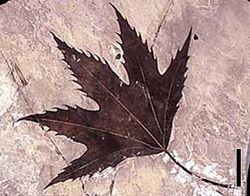
|
| Additional Information
|
Platanus is an extant genus of sycamores (also known as plane trees). Most species of Platanus are between 100 and 150 feet tall. Most species of Platanus are deciduous, but Platanus Kerrii is coniferous. Most plane trees grow in areas of high water content, such as a wetland. They have, however, been found to be drought-tolerant. Science Olympiad competitors commonly mistake Platanus with Acer, a similar genus of trees. One surefire way to tell the two apart would be to look at the way the veins of the leaves branch. All Platanus leaves will have 3 main veins that branch into two separate veins, and Acer does not have these branching veins.
|
Ginkgos (Phylum Ginkgophyta)
| Picture(s)
|
No pictures have been added as of yet.
|
Genus Ginkgo
| Picture(s)
|
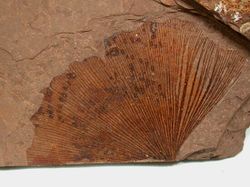
|
| Common Names
|
Ginkgo
|
| Physical Description
|
Non-Flowering Seed Plants
|
| Fossil Range
|
Jurassic - Present, maximum diversity was reached in the cretaceous, Ginkgo was reduced to a single polymorphic species in the paleocene. It disappeared from the north american fossil record 7 mya.
|
| Taxonomy
|
Kingdom: Plantae Clade: Tracheophytes Division (Phylum): Ginkgophyta Class: Ginkgoopsida Order: Ginkgoales Family: Ginkgoaceae
|
| Mode of Life or Habitat
|
Photosynthesizer
|
| Distribution
|
Australia, Africa, South America
|
| Additional Information
|
Very slow rate of evolution. Only 1 extant species: Ginkgo Biloba, which is found in China. Considered a "living fossil" or a "Lazarus Taxon". In young stages of life Ginkgo plants would grow taller very quickly before branching out and thickening. They were able to survive in China until modern day. In 1100 AD they were cultivated by Buddhist monks(Zhejiang province) and were brought to Europe and America in the 1700s. These trees are present in many American cities today.
|
Phylum Lycopodiophyta
| Picture(s)
|
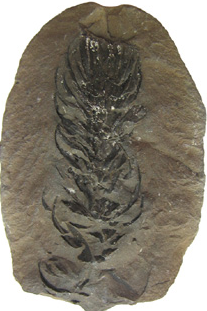
|
| Common Names
|
Club Mosses
|
| Fossil Range
|
Silurian - Present (Extant)
|
| Taxonomy
|
Kingdom: Plantae Clade: Tracheophytes Clade: Lycophytes
|
| Mode of Life or Habitat
|
Photosynthesizer
|
| Distribution
|
North America, South America, Europe, Asia, Africa, Australia
|
| Etymology
|
Translingual: "lukos" wolf and "phyte" plant
|
| Additional Information
|
Reproduce Using Spores.
|
Genus Lepidodendron
| Picture(s)
|
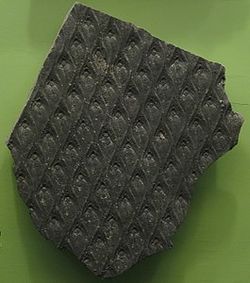
|
| Common Names
|
Scale Trees
|
| Fossil Range
|
Early Carboniferous - Late Triassic
|
| Taxonomy
|
Kingdom: Plantae Clade: Tracheophytes Clade: Lycophytes Class: Lycopodiopsida Order: Lepidodendrales Family: Lepidodendraceae
|
| Mode of Life or Habitat
|
Photosynthesizer
|
| Adaptations Over Time
|
They benefited from their lack of branches at lower heights because it allowed them to more densly populate an area.
|
| Distribution
|
North America, Europe, and Asia
|
| Etymology
|
Greek: "lepis" scale and dendron "tree" The name scale tree comes from the leaf scars found on their bark which look like scales. As the trees grew they likely shed their lower leaves creating the characteristic scale pattern.
|
| Additional Information
|
Displayed constant dichotomy, meaning that whenever the tree splits in to 2 branches, those branches would be evenly sized. Grew extremely fast and tall, reaching heights of up to 160 feet in a lifespan of 10-15 years. Susceptible to fungal parasites. Most commonly found in the Carboniferous period, specifically the Pennsylvanian. The roots displayed dichotomy. These plants likely also had a symbiotic relationship with mycorrhizal fungi, which lived in the roots and improved nutrient and water uptake. At the tips of the branches were cones that produced spores. It is thought that lepidodendron was monocarpic, it died after reproducing one time. Some scientists even hypothesize that each generation reproduced and died all at around the same times. These plants became so efficient that CO2 levels plummeted and caused an ice age at the end of the carboniferous(Karoo Ice Age).
|
| External Links
|
https://www.indefenseofplants.com/blog/2018/11/13/the-rise-and-fall-of-the-scale-trees
|
Conifers (Phylum Pinophyta)
| Picture(s)
|
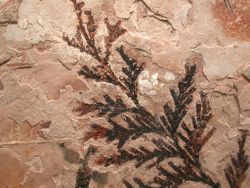
|
| Common Names
|
Coniferous trees.
|
| Physical Description
|
The trees that have needles
|
| Fossil Range
|
Carboniferous - Recent
|
| Taxonomy
|
Kingdom: Plantae Clade: Tracheophytes Clade: Spermatophytes
|
| Mode of Life or Habitat
|
Photosynthesizer
|
| Distribution
|
Common in the northern hemisphere, particularly at middle-high latitudes.
|
| Etymology
|
Greek: "Pinus" (Genus of Pines)
|
| Additional Information
|
Within this phylum are Cedars, Cypresses, Pines, Hemlocks, Redwoods, and more. This phylum makes up the largest of the world's carbon sinks. Have faced considerable logging efforts for soft lumber. Most are monoecious, but some members are dioecious.
|
| External Links
|
Gardenology: Pinophyta
|
Genus Metasequoia
| Picture(s)
|
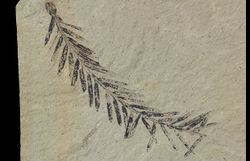
|
| Common Names
|
Dawn Redwood
|
| Fossil Range
|
Late Cretaceous - Recent (Extant)
|
| Taxonomy
|
Kingdom: Plantae Clade: Tracheophytes Phylum (Division): Pinophyta Class: Pinopsida Order: Pinales Family: Cupressaceae Subfamily: Sequoioideae
|
| Mode of Life or Habitat
|
Photosynthesizer
|
| Adaptations Over Time
|
None. Literally 0 adaptation/evolution.
|
| Distribution
|
Currently found in China, Fossils of Metasequoia(rediscovered in 1944) have been found in North America and Europe. It is the state fossil of Oregon
|
| Etymology
|
Name is derived from Greek
|
| Additional Information
|
Metasequoia (dawn redwoods) is a deciduous tree, which is known to grow relatively quickly. Certain species of Metasequia have been known to reach heights of above 165 feet, which is actually among the shortest redwoods in the world. The extant species of Metasequoia, Metasequoia Glyptostroboides is indigenous to China. Metasequoia has not evolved at all in the last 65 million years, they are seen today exactly as they were 65 million years ago. The leaves are arranged in pairs
|
Horsetails (Phylum Sphenophyta)
| Picture(s)
|
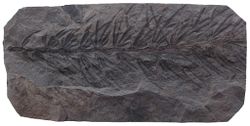
|
| Common Names
|
Horsetails
|
| Fossil Range
|
Devonian-Recent (Extant)
|
| Taxonomy
|
Kingdom: Plantae
|
| Mode of Life or Habitat
|
Photosynthesizer
|
| Etymology
|
Greek: "Wedge" and Latin: "Plant"
|
| External Links
|
Known to inhabit wetlands and other areas with high levels of precipitation.
|
Genus Calamites
| Picture(s)
|
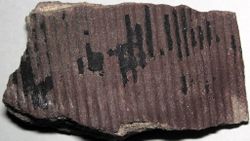
|
| Common Names
|
Horsetails
|
| Fossil Range
|
Carboniferous - Early Permian
|
| Taxonomy
|
Kingdom: Plantae Clade: Tracheophytes Phylum: Polypodiopsida Class: Equisetidae Order: Equisetales Family: Calamitaceae
|
| Mode of Life or Habitat
|
Photosynthesizer
|
| Distribution
|
Europe, Asia, North America
|
| Etymology
|
Latin: "Sweet Flag"
|
| Additional Information
|
Grew to heights of anywhere from 30-50 meters. Played a large part in the creation of the coal swamps of the Carboniferous period, particularly on the continents of Europe and Asia. The trunks of Calamites much resembled that of modern day bamboo. This made the trunks of Calamites very brittle. Reproduced using auxospores. One common type of calamite fossils are called pith casts. This is when the inside of the trunk becomes filled with sediment. The actual trunk is a few inches thicker than the internal cast due to the presence of vascular tissue which was not fossilized. The diameter gets smaller when the trunk attatches to a rhizoid. Calamites have secondary xylem(wood)they also have unifacial cambium, this only produces xylem not phloem, which may pose a problem to larger plants.
|
| External Links
|
Information and Gallery of Calamites
|
Genus Annularia
| Picture(s)
|
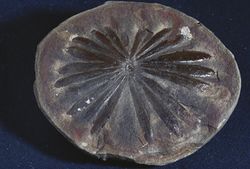
|
| Common Names
|
Horsetail
|
| Fossil Range
|
Carboniferous
|
| Taxonomy
|
Kingdom: Plantae Clade: Tracheophytes Phylum: Polypodiopsida Class: Equisetidae Order: Equisetales Family: Calamitaceae
|
| Mode of Life or Habitat
|
Photosynthesizer
|
| Distribution
|
Europe, North America, Asia
|
| Etymology
|
Greek: "Fruiting Plant"
|
| Additional Information
|
Annularia is a form taxon, applied to fossil foliage belonging to extinct plants of the genus Calamites in the order Equisetales. Annularia leaves are arranged in whorls of between 8-15 leaves. Its shape is quite variable, being oval in Annularia sphenophylloides and semilinear in Annularia radiata, but they are always flat and of varying lengths. Annularia only existed in the Carboniferous period, although they could've possibly existed in the Permian period.
|
Seed Ferns (Phylum Pteridospermatophyta)
| Picture(s)
|
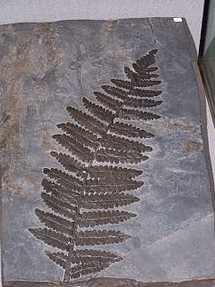
|
| Common Names
|
Seed Ferns
|
| Fossil Range
|
Devonian - Late Cretaceous
|
| Taxonomy
|
Kingdom: Plantae
|
| Mode of Life or Habitat
|
Photosynthesizer
|
| Etymology
|
Greek: Seed Fern
|
| Additional Information
|
Particularly abundant in the Carboniferous and Permian periods.
|
Genus Glossopteris
| Picture(s)
|
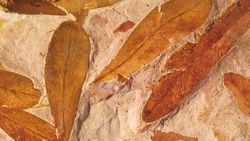
|
| Common Names
|
Seed Fern
|
| Fossil Range
|
Permian
|
| Taxonomy
|
Kingdom: Plantae Clade: Tracheophytes Phylum (Division): Pteridospermatophyta Order: Glossopteridales Family: Glossopteridaceae
|
| Mode of Life or Habitat
|
Photosynthesizer
|
| Distribution
|
Most commonly found in India. Also found in Africa (Madagascar specifically), Asia, South America, and Australia
|
| Etymology
|
Greek: Tongue Fern
|
| Additional Information
|
Glossopteris is the largest genus of seed ferns, containing about 15 species. Glossopteris could grow to 30 meters tall. It is unknown if Glossopteris was monoecious or dioecious. Glossopteris only existed in the Permian. It is also very important to the theory of past supercontinents, in that this was one of the fossils used to prove the Continental Drift hypothesis. Lived in the middle to high latitude areas of the world when it was extant.
|
| External Links
|
Mindat Glossopteris (Disclaimer: Conflicting information)
|
True Ferns (Phylum Pteridophyta)
| Picture(s)
|
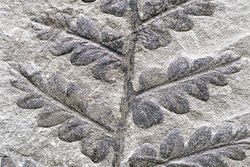
|
| Common Names
|
True Ferns
|
| Fossil Range
|
Variable between taxons.
|
| Taxonomy
|
Kingdom: Plantae
|
| Mode of Life or Habitat
|
Photosynthesizers
|
| Distribution
|
Variable between taxons
|
| Etymology
|
Greek: Fern Plant
|
| Additional Information
|
Vascular ferns. Reproduce using spores. Release either sperm or egg spores depending on where the individual plant is in its life cycle.
|
Genus Psaronius
| Picture(s)
|
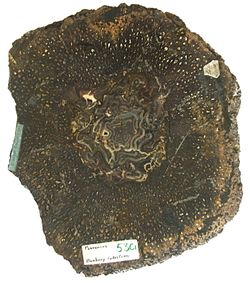
|
| Common Names
|
Marattialean Tree Fern
|
| Physical Description
|
A widely distributed tree fern from the Carboniferous period.
|
| Fossil Range
|
Late Carboniferous - Late Permian
|
| Taxonomy
|
Kingdom: Plantae Phylum (Division): Pteridophyta Class: Marattiopsida Order: Marattiales Family: Psaroniaceae
|
| Mode of Life or Habitat
|
Photosynthesizer
|
| Distribution
|
North America, Europe, Africa,Asia
|
| Etymology
|
Greek: Precious Stone, also know as Staarsteine- star stone
|
| Additional Information
|
The leaf genus for Psaronius is Pecopteris. By looking at the fossils of Psaronius root mantles, scientists have deduced that that vines and other plants were growing inside the root mantles of Psaronius plants. It could grow to be 10 or 15 meters high. Tree ferns, unlike gymnospermous and angiospermous did not have second growth (horizontal growth as opposed to vertical growth). Instead psaronius developed a false trunk. This trunk started out with a vascular strand as it grew upwards it would divide into different parts. While his was happening adventitious roots(roots that form from non-root tissue like the stem) grew forming a root mantle which provided stability. Leaves could be 2-3 meters long. Leafe scars would have been visible at the top of the tree because they had yet to be covered by the mantle.( this is one way you can tell what part of the tree a specimen comes from). Occasionally specimens of silicified trunks of Psaronius can be found, specifically in Chemnitz Germany. When polished these root mantles can make shapes that look like stars(hence the name star stone). The cellular structure is not preserved in the fossils. It may have had a symbiotic relationship with small ferns and horsetails that grew along the roots.
|
| External Links
|
Elsevier Psaronius (PDF) https://steurh.home.xs4all.nl/engpsar/epsaron.html
|
Genus Pecopteris
| Picture(s)
|
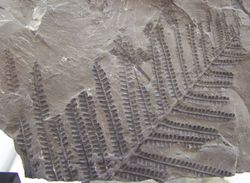
|
| Common Names
|
Marattialean Fern
|
| Physical Description
|
A fern with arranged leaflets to look like a comb, giving it the root word, comb fern.
|
| Fossil Range
|
Late Devonian to Early Permian
|
| Taxonomy
|
Kingdom: Plantae Phylum: Pteridophyta Class: Filicopsida Order: Marattiales Family: Marattiacaeae
|
| Mode of Life or Habitat
|
Photosynthesizer
|
| Distribution
|
South America, North America, Europe, Parts of Asia
|
| Etymology
|
Comb Fern
|
| Additional Information
|
Pecopteris is a very common form genus of leaves. Most Pecopteris leaves and fronds are associated with the marattialean tree fern Psaronius. Pecopteris first appeared in the Devonian period, but flourished in the Carboniferous, especially the Pennsylvanian. Plants bearing these leaves became extinct in the Permian period. It is the only true fern that humans know about. These leaves played an important role in shaping paleoecosystems. The fallen leaves created dirt, allowing trees to expand further inland. They could have as many as 7000 spores on the underside of their leaves.
|

















